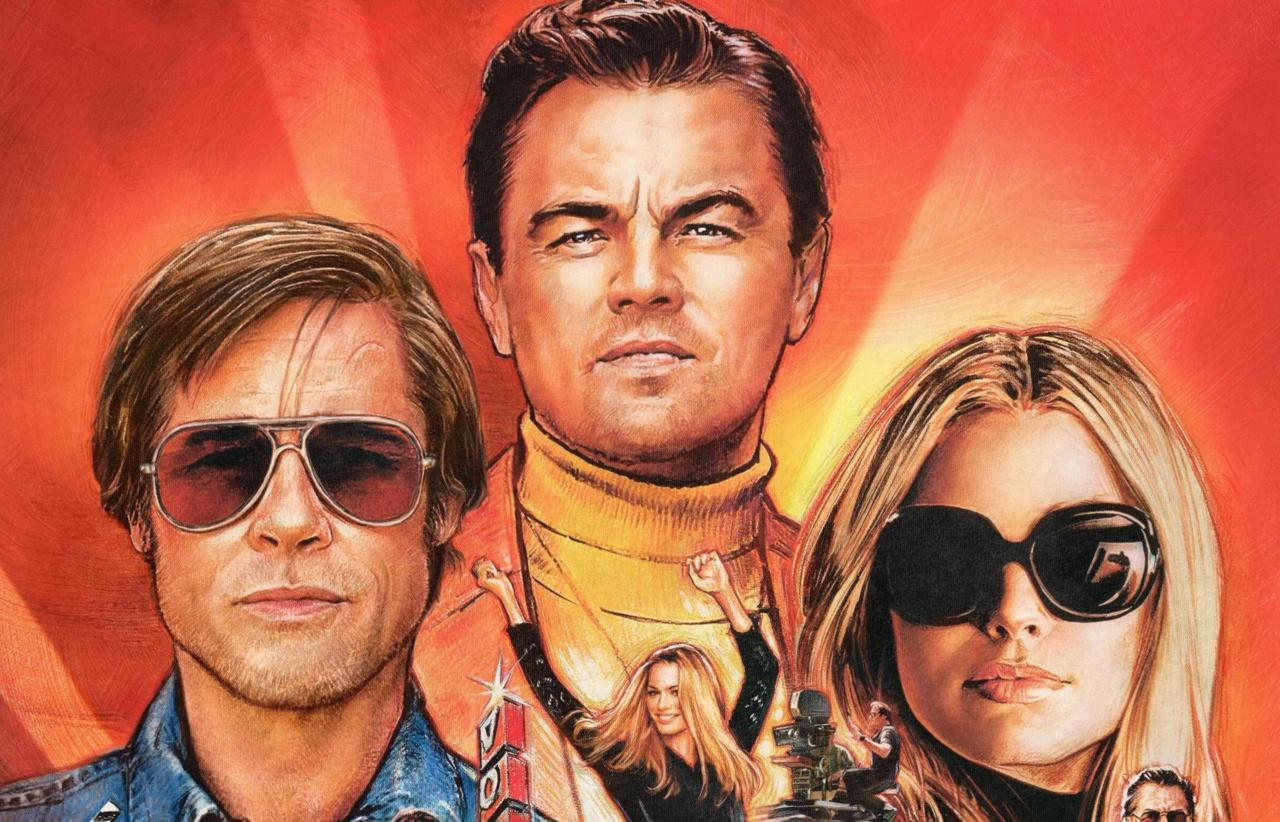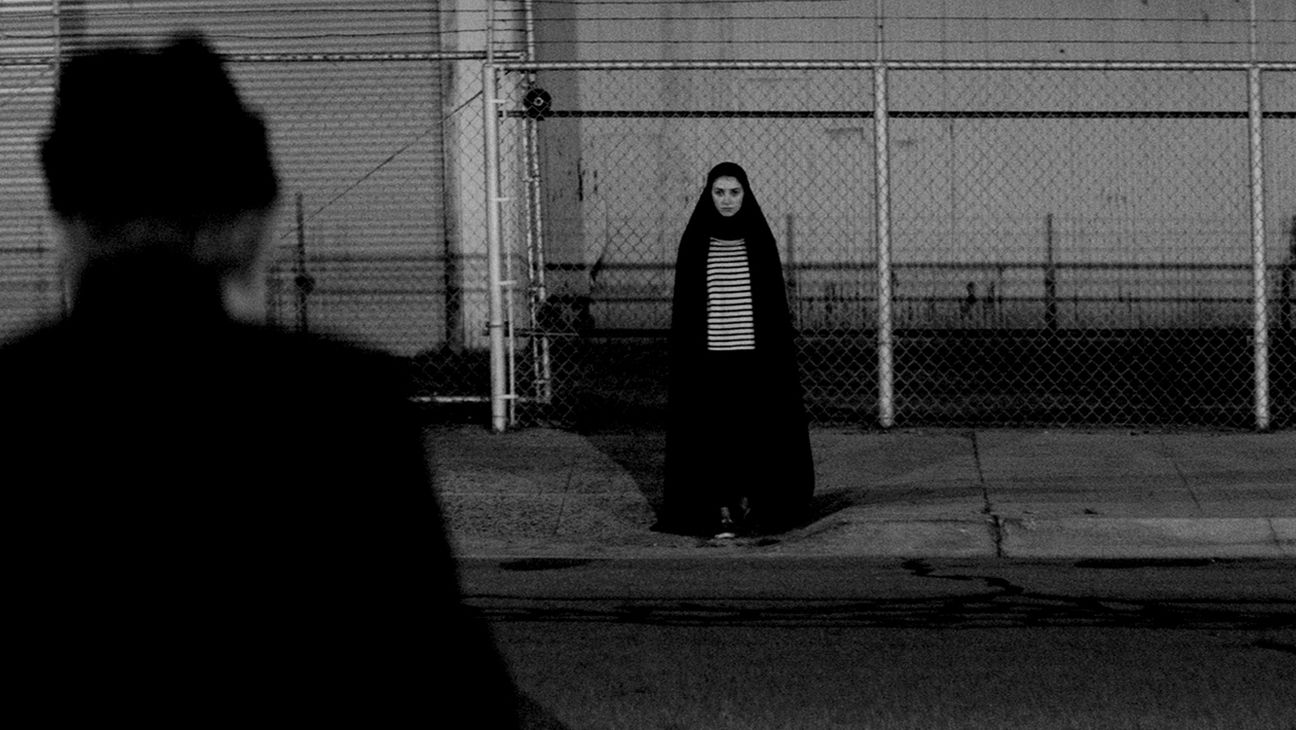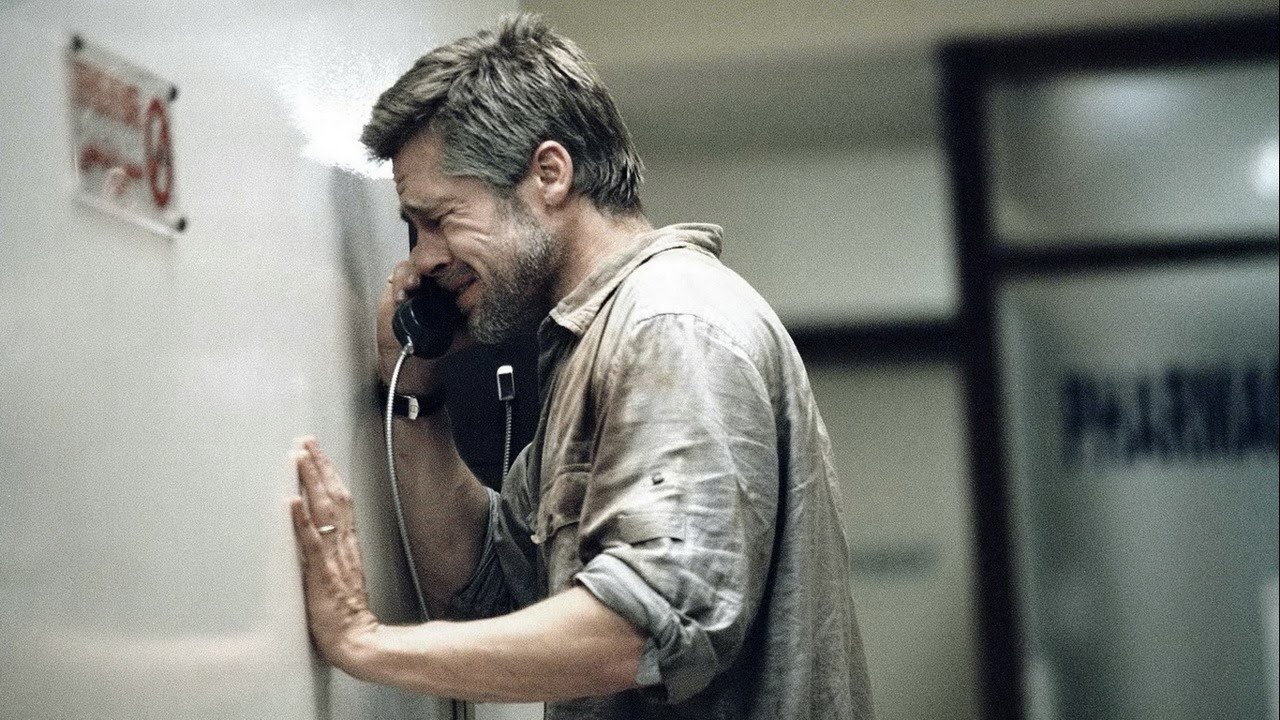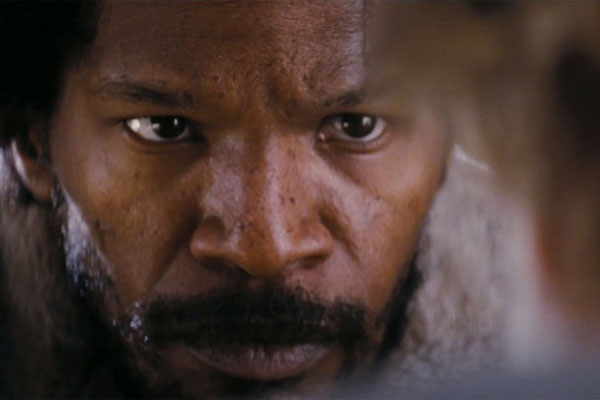Once Upon a Time… in Hollywood (2019, Dir. Quentin Tarantino):
In this town, it can all change like that.
– Leonardo DiCaprio, Once Upon a Time… in Hollywood
For long stretches of his career, Quentin Tarantino has disappeared down the rabbit hole of his own obsessions. What need for engaging with the world when you can construct a hermetically sealed grindhouse universe of your own, populated by Bills to kill, Stuntman Mikes to pummel, and natural born killers to idolize? Not that he’s ever been over-bothered about it; when you market yourself as a rock-star maverick director with an encyclopedic knowledge of film history, you’re all but expected to play in a sandbox of your own making.
Tarantino’s preoccupation with all things pulptastic has remained steadfast, but in recent years he’s grown ever more playful with the form of his work, if not the content. Inglorious Basterds (2009) dipped into World War II history, only to turn it on its ear with a jaw-dropping rewrite of a finale in which Hitler gets shot to smithereens. Django Unchained (2012) married two of his favorite genres, westerns and blaxploitation, for a rollicking if overindulgent ride into the heart of pre-Civil War slavery. Based on a script originally performed as a play reading, the stagey Hateful Eight (2015) was essentially a remake of Reservoir Dogs (1993), only with more cartoonish gore and some black-hearted musings on America’s history of violence. Taken as a trifecta, these three films carry the sense of Tarantino paddling in circles, attempting to outswim the whirlpool tug of his assorted influences.
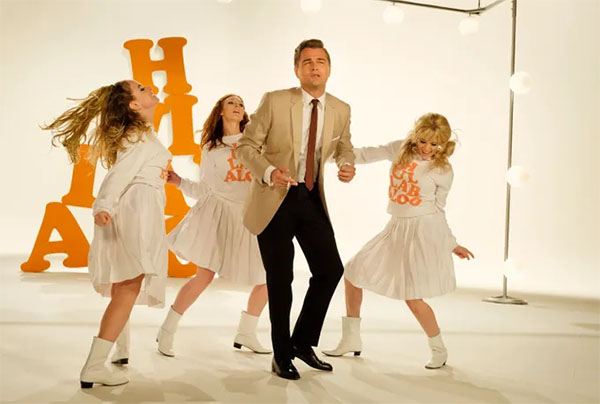
Once Upon a Time… in Hollywood, set in 1969 and featuring real-life characters such as the Manson family, Sharon Tate, and other assorted celebrities, might seem as stylized as every other Tarantino film (isn’t Hollywood nothing but artifice?), just another flirtation with history in which real happenings are pounded like Play-Doh into warped alternate timelines. But while Once Upon a Time doesn’t necessarily deviate from that approach, the tenor has changed. Now three decades into his career, and drawing near to the finish line (he claims that he’ll only direct 10 movies, and this is #9), Tarantino might be feeling a bit reflective. For the first time since Jackie Brown (1997), he’s fashioned a hang-out movie, in which the paroxysms of violence and plot are secondary to his characters.
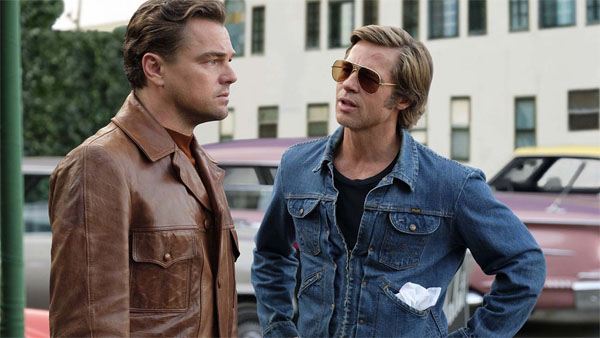
The film revolves around best buds Rick Dalton (Leonardo DiCaprio) and Cliff Booth (Brad Pitt). Rick is a former lead in westerns now reduced to C-grade war exploitation pics (“Anyone order fried sauerkraut?” he bellows before barbecuing Nazis with a flamethrower) and guest spots on TV shows promoting younger and hotter stars. Cliff is Rick’s long-time stunt double and go-fer, a laconic movie lifer with the easygoing drawl of stunt legend (and Burt Reynolds’ BFF) Hal Needham. Tarantino views these soon-to-be dinosaurs with a wary lens: they’re pros, but they’re also clearly out of touch. When gabby agent Marvin Schwarz (Al Pacino) advises Rick to revitalize his career by shooting westerns in Italy, a la Clint Eastwood, Rick scoffs, “No one likes spaghetti westerns. They’re a farce” (pure blasphemy, in Tarantino’s eyes). Cliff may be the epitome of working-man cool, but it’s also hinted that he may have killed his nagging wife (a jokey flashback to the event might ring a little sour for some), and his ego drives him into skirmishes with up-and-coming superstars like Bruce Lee (Mike Moh) that render him unemployable.
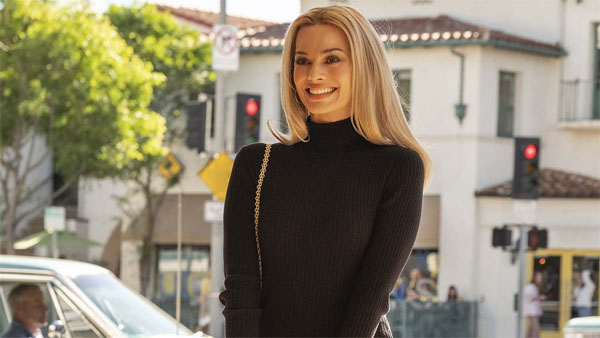
Still, though Tarantino views his protagonists with his usual hip detachment, he clearly has affection for them. For once, what’s important isn’t bloody revenge, a glowing briefcase, or oodles of money, but a little self-respect and a final chance to ward off obsolescence, and the more relatable stakes ground his characters. Battered players in the mad game of show business, Rick and Cliff are vulnerable, tetchy and very human; coming across as something more than human is Sharon Tate (Margot Robbie), Rick’s new neighbor. Sharon has the world on the proverbial platter: she’s married to wunderkind director Roman Polanski, starring in the hot film of the moment (Dean Martin’s spy comedy The Wrecking Crew), and given to partying it up with Steve MacQueen (Damian Lewis), Jay Sebring (Emile Hirsch), and the Mamas and the Papas at the Playboy Mansion. In short, she’s a clear successor to old-school stalwarts like Rick and Cliff, and embodies the eternal dream of Hollywood, in which pretty, innocent young things go from zero to superstar in no time flat.
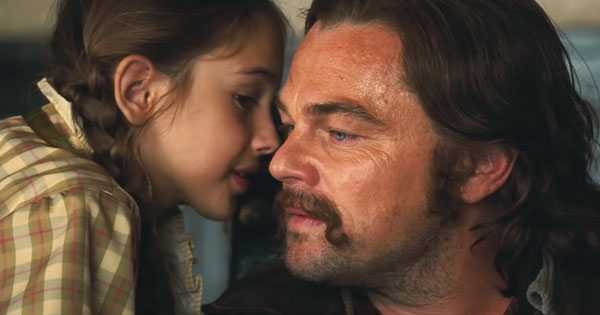
For much of its running time, Once Upon a Time… in Hollywood focuses on a single day in the life of our principals, and Tarantino provides a gangbusters vignette for each of them. Rick wrestles with a hangover and crippling self-doubts as he guests as a bad guy on the TV western Lancer, only to come up against something far more formidable: a self-possessed child actress styled after Jodie Foster (scene-stealing Julie Butters). “It’s the actor’s job to stretch for 100% effectiveness,” she declares. “When I’m on set it helps to call me by my character’s name.” Her repartee with DiCaprio draws out some of the most fluid, affecting acting of his career, as he see-saws between despair and desperation, culminating in a one-take scene as shiveringly good as Naomi Watts’ star-making audition in David Lynch’s Mulholland Dr. Meanwhile, Sharon Tate pays a visit to a local cinema in Westwood to watch The Wrecking Crew, and the sight of Robbie with her feet up, basking in the good cheer of the audience every time she appears on screen, is the closest that Tarantino has ever come to a fairy-tale moment.
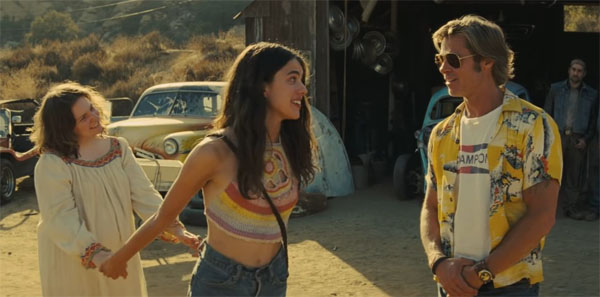
More unusual is Cliff’s adventure, in which he gives a comely hippie hitchhiker (Margaret Qualley) a lift to Spahn Ranch, formerly a film site and now the home of the Manson collective. Seeking a chat with his old buddy George Spahn (Bruce Dern), the owner of the place, Cliff is warded off by cult members played by Lena Dunham and Dakota Fanning, and as his suspicions grow, the scene achieves a hushed, understated menace rare to Tarantino’s work, capped off with an unexpected conclusion that avoids the usual gory hijinks, but is no less impactful.
Up to this point, Once Upon a Time is as good as anything Tarantino has ever done, in no small part because it’s unlike much of what he’s done before. In a world where everyone is besotted with the movies—even the Manson clan gets star-struck when they bump into Rick Dalton—Tarantino’s tribute to the Dream Factory has ironically led him to his most naturalistic work in decades. Instead of showboat dialogue and jagged outbreaks of violence, we get intimate scenes of Pitt hanging in his trailer with his pit bull, silently digging the latest episode of Mannix, or DiCaprio lounging in his pool, a few sheets to the wind and struggling to memorize his lines. Essentially the lead, Pitt gives his most relaxed star turn yet, and while DiCaprio is too young to completely convince as a grizzled over-the-hill actor (Timothy Olyphant, older by about a decade, plays one of the young guns ready to supplant him), he finds an entertaining balance between self-parodic exasperation and legit pathos. Robbie has a couple dozen lines total, but sails through in a state of radiant grace, sleek and sunshine-y in go-go boots and short skirts.
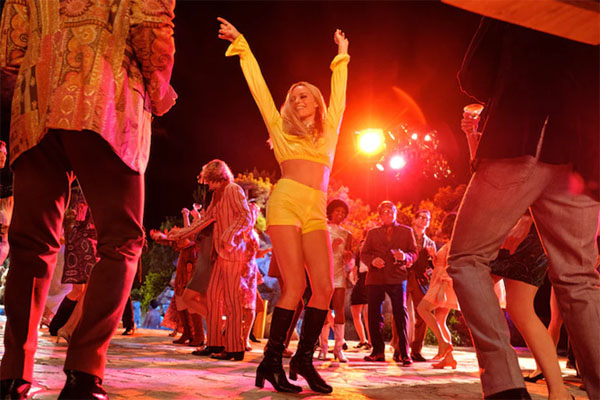
Even as we enjoy these characters and Tarantino’s loving evocations of 1969 LA — the recreated TV clips with DiCaprio spliced in, the interstitial car radio ads and the typically eclectic soundtrack — the specter of history hangs over the story. Knowing what we know about Sharon Tate, the Manson family, and the horrific events of August 1969 lends the film an unsettling undercurrent of suspense. Will Tarantino deign to change history once again? We have to wait a while for the answer since the story inexplicably jumps forward in time for the third act, just as an excuse to let Tarantino indulge in his love of pastiche (Spaghetti westerns! Crazy low-budget spy movies!). But he stirs up a good deal of dread as the Manson family embarks on its fateful visit to Tate’s home, followed by a show-stopping frenzy involving Cliff’s pit bull, an acid-laced cigarette, and a familiar flamethrower (“That’s one shit-fuck crazy weapon you don’t want to be on the other side of”). It’s as graphic, profane and ludicrous as you might expect, but does it fit in with the rest of the movie? Certainly it’s at odds with Tarantino’s otherwise restrained approach, and provides further ammunition to those who condemn him for his semi-misogynistic, “shock for shock value’s sake” sensibilities.
Still, the finale does open the door to a resolution both heartwarming and elegiac—a true Hollywood ending, in fact. Like his idol Sergio Leone’s Once Upon a Time movies (Once Upon a Time in the West, Once Upon a Time in America), Tarantino has fashioned a valentine to a particular place and time, inflated to mythical proportions, and if the finale isn’t as convincing as what came before, it’s still one of the rare times his artifice approaches genuine emotion. If he remains as knotty as ever as a filmmaker, Once Upon a Time… in Hollywood shows, to pleasing effect, that even a pulp purveyor has a heart beating underneath it all.
